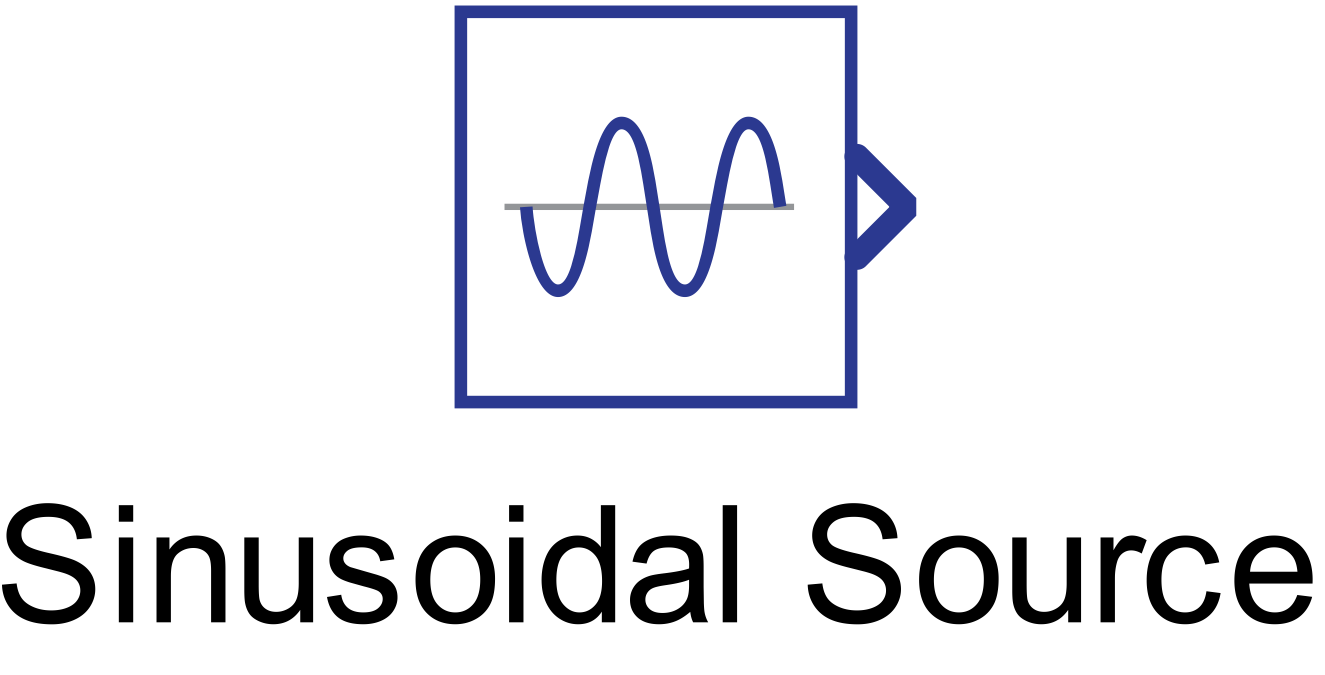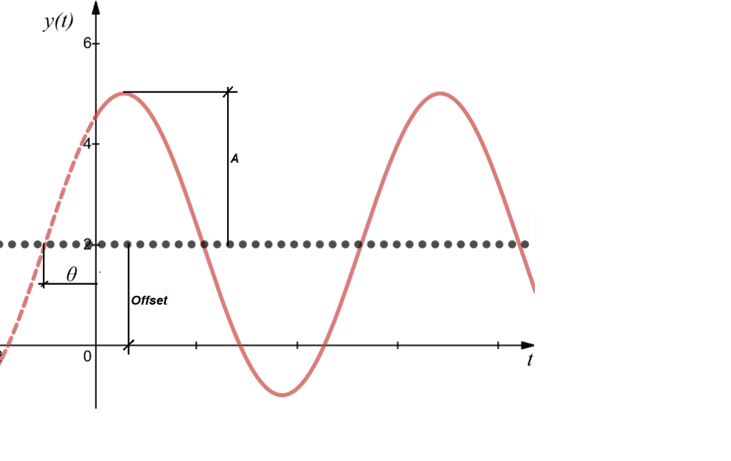Sinusoidal Source
Description of the Sinusoidal Source component in Schematic Editor, which outputs a sinusoidal waveform
Component icon

Description
The Sinusoidal Source component outputs a sinusoidal waveform.
Sinusoidal Source can be represented with a function
y(t) = Offset + A . sin(2.π.f + θ)
where:
- Offset - is the DC offset value
- A - is the sinusoidal waveform amplitude
- f - is the frequency
- θ - is the displacement angle for the sinusoidal waveform
An example of a sine waveform generated by this component is depicted in Figure 2.

Ports
- Output (out)
- Sinusoidal waveform.
- Supported types: real.
- Vector support: yes.
- The vector length is calculated from the property values. If the property is defined as a vector, the output will be a vector of the same length.
- Sinusoidal waveform.
Properties
- Amplitude
- Type in the peak value of the sinusoidal waveform. This property can be set as a scalar or a vector.
- DC offset
- Type in the DC offset value to be added to the sinusoidal waveform. This property can be set as a scalar or a vector.
- Frequency
- Type in the frequency value, in hertz, of the sinusoidal waveform. This property can be set as a scalar or a vector.
- Phase
- Type in the value of the phase, in degrees, with which the sinusoidal waveform will be delayed in reference to the simulation start time. This property can be set as a scalar or a vector.
- Execution rate
- Type in the desired signal processing execution rate. This value must be compatible with other signal processing components of the same circuit: the value must be a multiple of the fastest execution rate in the circuit. There can be up to four different execution rates. To specify the execution rate, you can use either decimal (e.g. 0.001) or exponential values (e.g. 1e-3) in seconds. Alternatively, you can type in ‘inherit’ in which case the component will be assigned execution rate based on the execution rate of the components it is receiving input from.
- Tunable
Tunable is ignored in TyphoonSim and changing its value will not affect TyphoonSim simulation at all.
- Enables run-time tuning of the selected component. This will allow you to change values for frequency, DC offset, amplitude, and phase during simulation without the need to recompile the model. Tunable properties are available in HIL SCADA in Model Explorer.
- Phase can be tuned only before the start of the simulation.